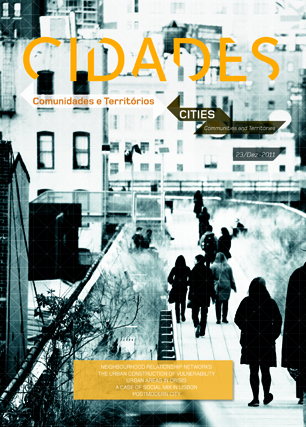Construção, densificação, declínio e demolição de uma área urbana em crise
Uma história de desassossego em torno do abandono e das políticas
Palavras-chave:
Regeneração Urbana, Demolição, Habitação SocialResumo
O presente artigo pretende ser um contributo para a reflexão sobre as dinâmicas que afectam as áreas urbanas em crise e os efeitos das políticas que procuram regenerar essas áreas. O artigo estrutura-se em duas partes. Numa primeira, teórica, reflecte-se sobre a diversidade das áreas urbanas ‘em risco’ e dos factores que explicam o declínio dessas áreas, distinguindo-se os que se ligam dominantemente às características internas dos territórios (ao nível físico, económico, social e organizacional) dos externos, associados por exemplo à construção de representações sociais negativas de grupos e de territórios. Procura-se, sobretudo, salientar os efeitos adicionais negativos que decorrem da correlação destes dois tipos de desvantagem, enfatizando-se a sua capacidade para a criação de ciclos cumulativos de desvantagem em alguns territórios. A segunda parte, de natureza eminentemente empírica, centra-se no Bairro S. João de Deus. Começa-se por descrever o processo de construção e de densificação do Bairro, que viria a contribuir para uma trajectória de degradação social e urbanística que se aprofunda durante os anos 80. Depois, reflecte-se sobre o sentido contraditório das estratégias de regeneração que foram dirigidas para o bairro nas décadas seguintes: o programa de construção e de requalificação nos anos 90, no âmbito do Programa de Luta Contra a Pobreza, e, uma década depois, no âmbito do Programa Urban II, sobre a estratégia que levaria à demolição quase total do bairro. Termina-se reflectindo sobre os efeitos sociais e territoriais da demolição.
Downloads
Publicado
Edição
Secção
Licença
Cidades, Comunidades e Territórios by DINÂMIA'CET-IUL is licensed under a Creative Commons Atribuição-Uso Não-Comercial-Proibição de realização de Obras Derivadas 4.0 Unported License.Permissions beyond the scope of this license may be available at mailto:cidades.dinamiacet@iscte.pt.







